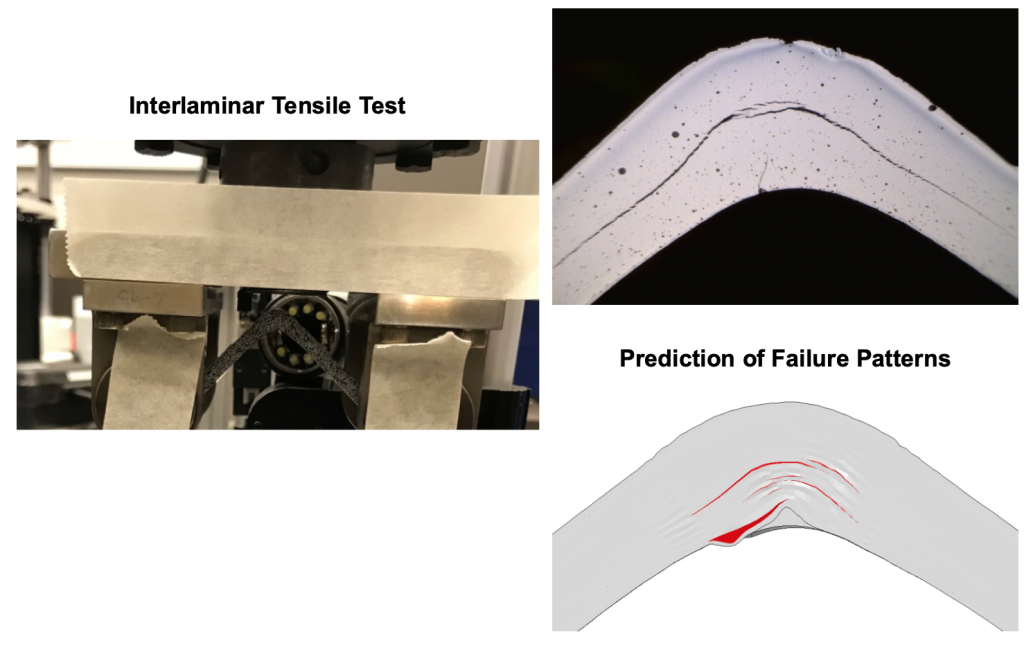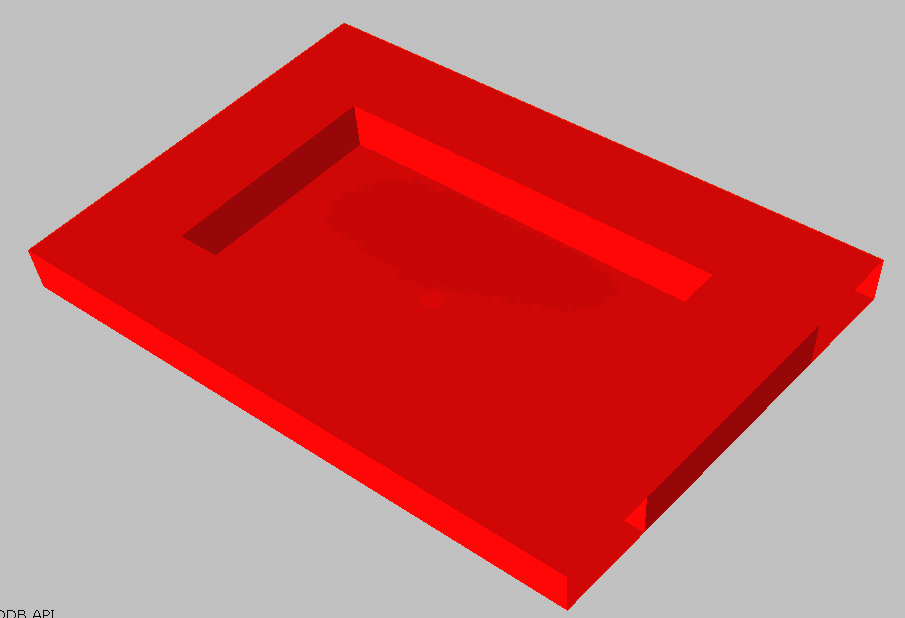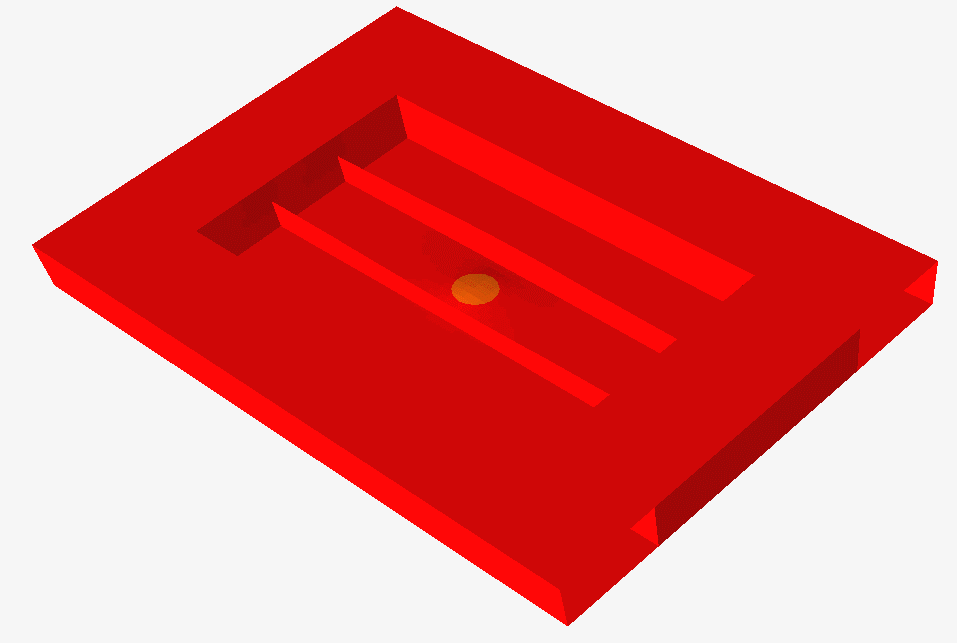
Services
GEM has expertise in several research areas of engineering importance.
Fatigue & Fracture Analysis
The fatigue and fracture field is one of the core service areas GEM offers. This field includes structural integrity and durability assessment of advanced structures, development of advanced fatigue and fracture damage prediction modules under multiaxial and variable amplitude loading, performance evaluation of as-built composite structures with service induced defects, and integration of fatigue and fracture analysis toolkits with commercial finite element software products. GEM’s core competencies in fatigue and fracture fall under the following:
- Structural integrity and durability assessment of advanced structures
- Failure prediction of advanced structures under dynamic loading
- Development of advanced fatigue and fracture damage analysis toolkits (Defects mapping)
Structural Integrity and Durability Assessment of Advanced Structures
Progressive Failure Prediction of a Multi-bolt Composite Component
To support Northrop Grumman Corporation (NGC)’s Call 2 program sponsored by the Air Force Research Laboratory, GEM has applied its Composite Bolted and Bonded Analysis Toolkit for Abaqus (CB2ATA) for the blind prediction of two 10-bolt composite joins with bearing dominant and bypass dominant failure configuration. The predicted failure load and final failure pattern are in excellent agreement with the test data. Such a success has demonstrated that we can accomplish a high fidelity prediction of a multi-joint system based on the reliable test of coupon bolt joint systems.
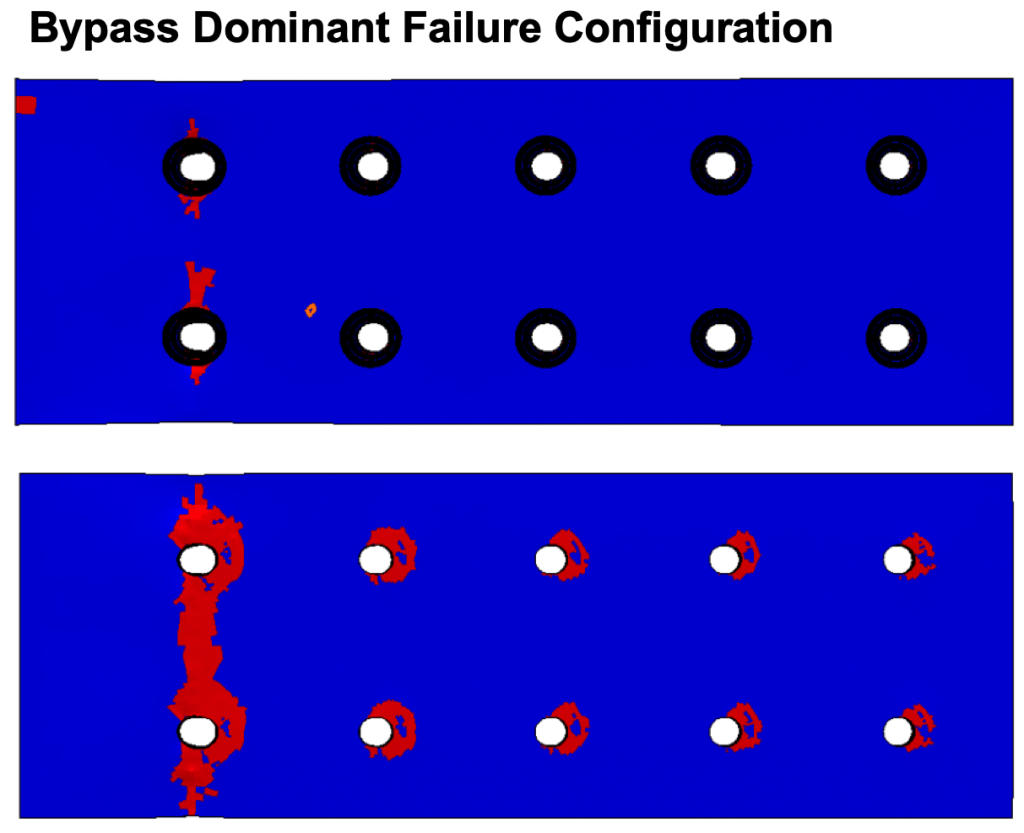
Composite Drilling Characterization and Performance Evaluation Drilling holes in composites leads to drilling-induced defects and damages such as delamination, burr, microcracking, swelling, splintering, and fiber pullout. A combined experimental and numerical approach has been developed under an AFRL sponsored project to extract the composite response and damage distribution caused by the drilling operation for model exploration and validation. The time dependent material removal process during drilling is simulated via an enhanced user-defined material model for the Abaqus/explicit. The applicability and high-fidelity of the developed toolkit are demonstrated by comparing both the global response and local failure predictions with the testing results of quasi-isotropic coupons with a backing plate of two different configurations.
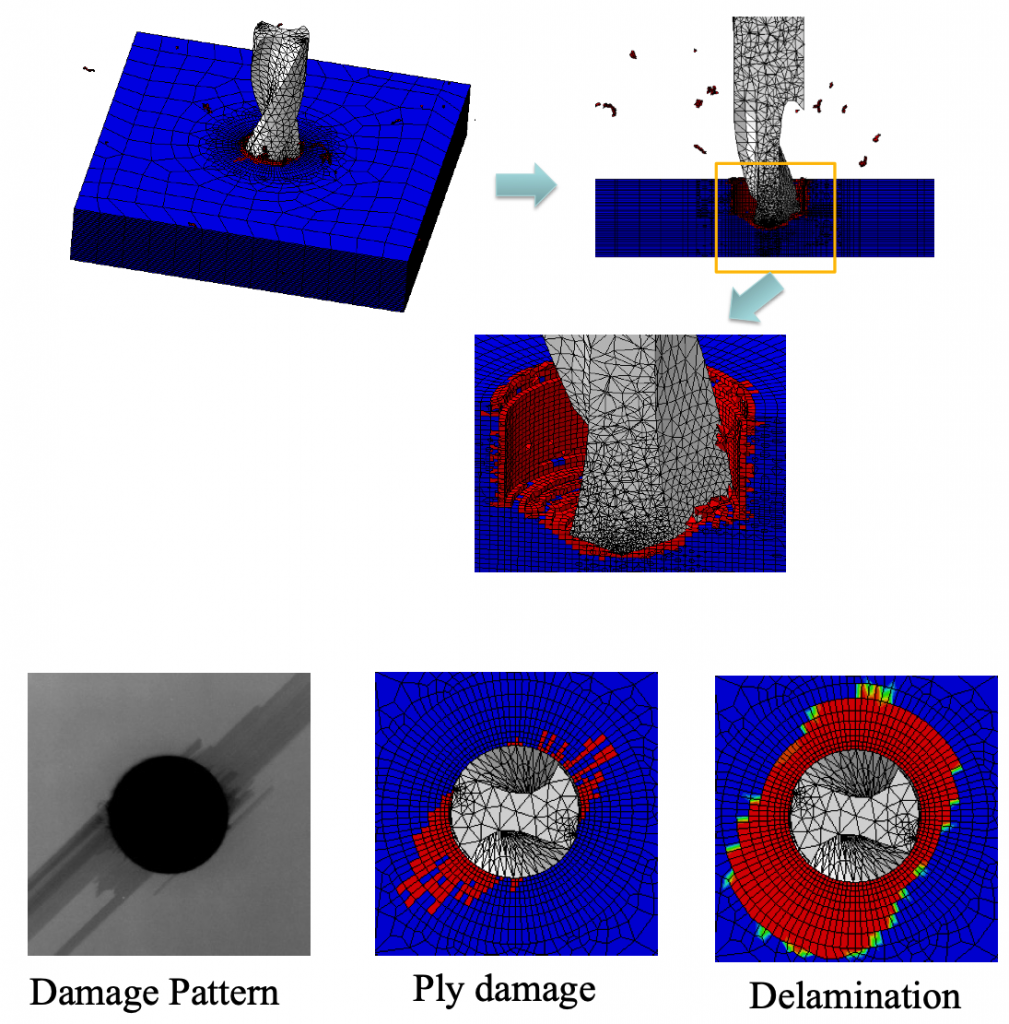
Fatigue Damage Assessment of Impacted Composite Component
A collaborative research and development has been performed by GEM and Defence Science and Technology Group in Australia for the assessment of the composite durability after impact for enhanced sustainment. The post-impact damage morphology is characterized non-destructively using ultrasonic inspection and XmCT. The impact induced damage is mapped into the composite component at each ply interface. A comparison of accumulative damage associated with each failure mode that contributes to the total is given for two selected levels (N1, N2) of number of fatigue cycles with N2 towards the final rupture stage.
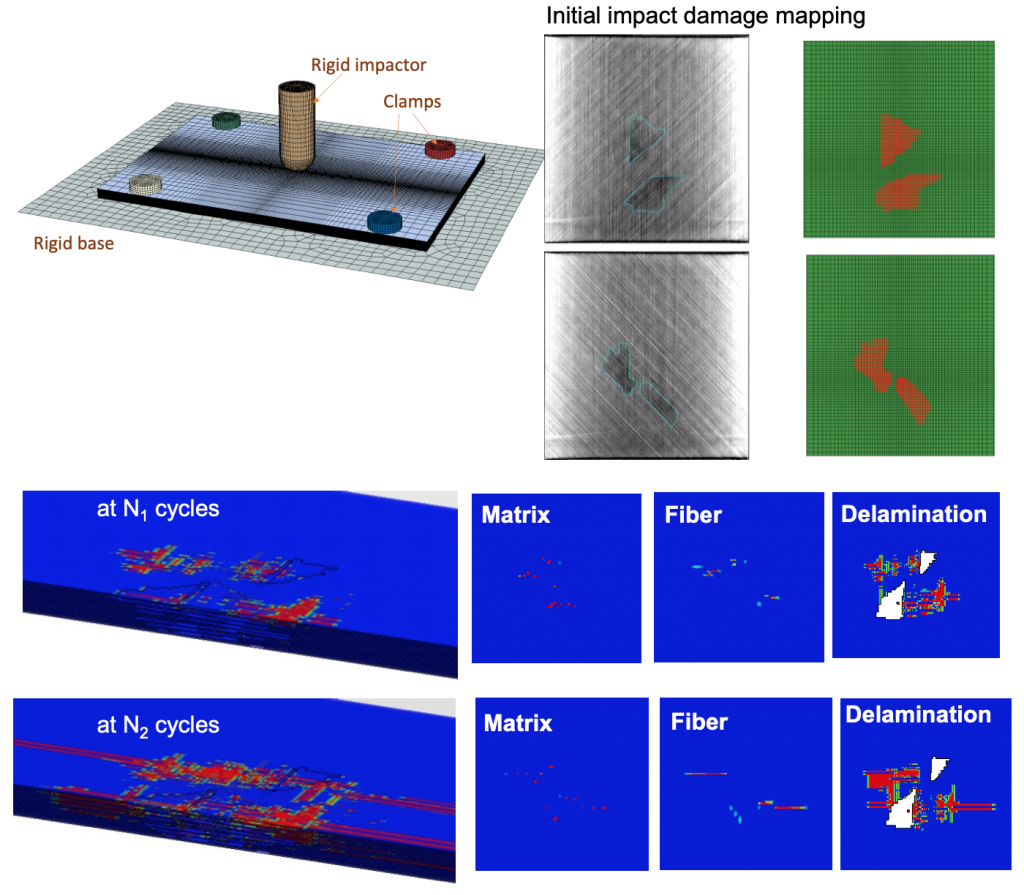
Fatigue Damage Assessment of Impacted Composite Component
A collaborative research and development has been performed by GEM and Defence Science and Technology Group in Australia for the assessment of the composite durability after impact for enhanced sustainment. The post-impact damage morphology is characterized non-destructively using ultrasonic inspection and XmCT. The impact induced damage is mapped into the composite component at each ply interface. A comparison of accumulative damage associated with each failure mode that contributes to the total is given for two selected levels (N1, N2) of number of fatigue cycles with N2 towards the final rupture stage.
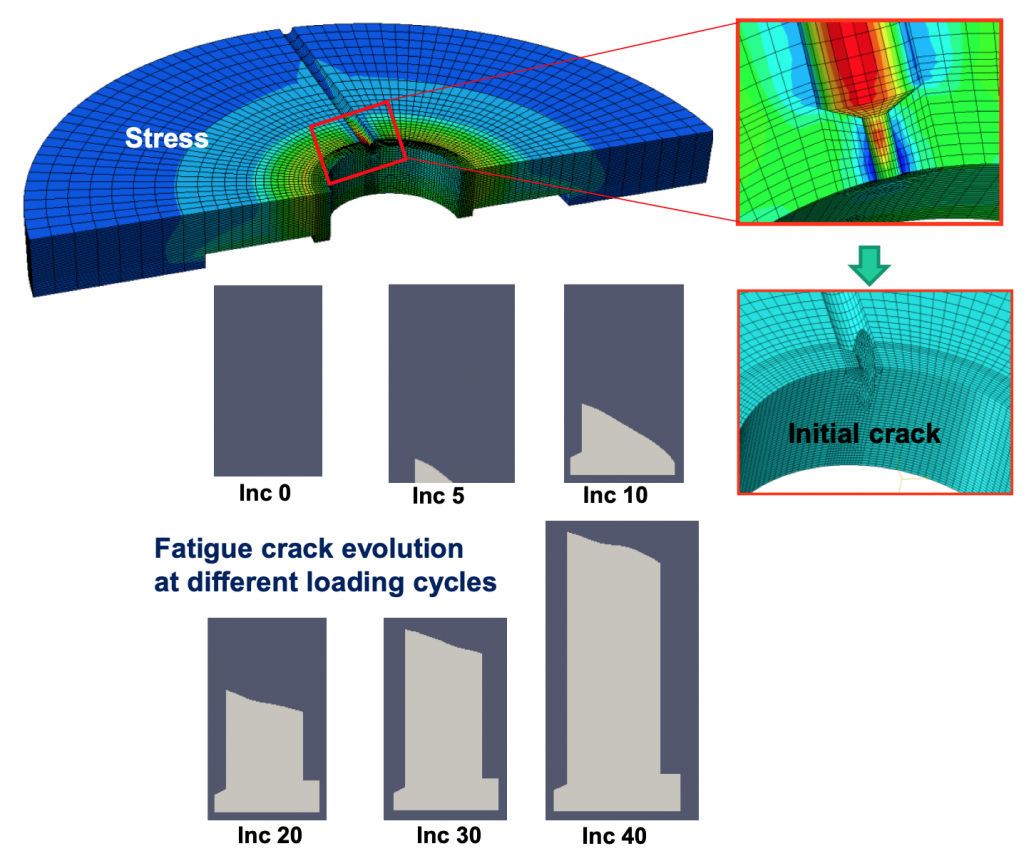
Failure Prediction of Advanced Structures under Dynamic Loading
Impact Simulation and Assessment of Compression after Impact for Composite Component
A collaborative tool application and demonstration work has been performed jointly by GEM and the Defence Science and Technology Group in Australia. A low velocity impact analysis is perfumed using a customized Abaqus implicit solver. The predicted delamination at each ply interface is compared with the measured damage using NDI techniques such as C-scan and X ray micro-computed tomography (microCT). After mapping the predicted delamination into the CB2ATA model using the discrete informed continuum damage approach, a progressive failure analysis is performed to determine the compressive strength of the composite panel after the impact. Extensive fiber and matrix damage patterns are compared with the experimental observations.
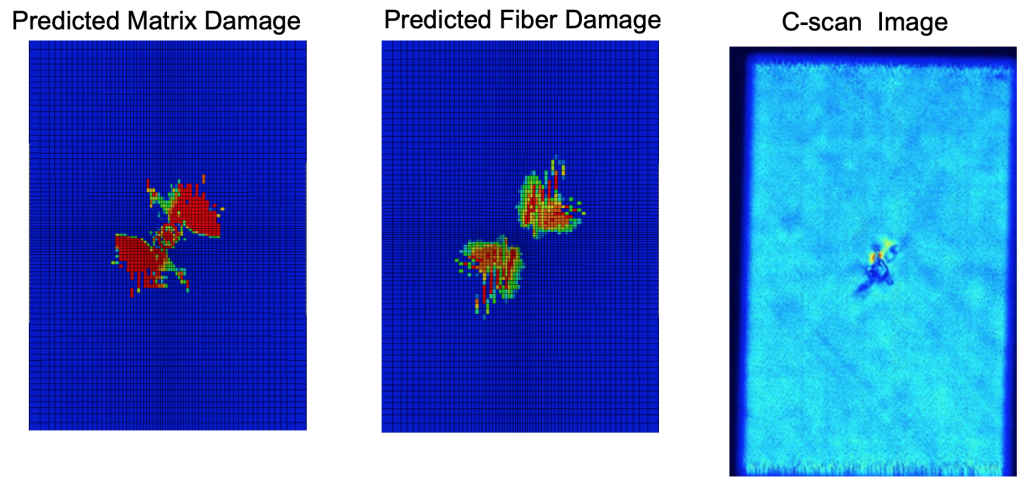

Ductile Failure Prediction of Thin Walled Structures under Dynamic Loading
GEM’s scientists have developed a software toolkit for Abaqus (XSHELL) for fracture evaluation and load deflection prediction of welded metallic structures subjected to impulsive loading. The toolkit has the unique capability of predicting crack propagation path in a large scale thin-walled structure and the associated structural response such as the load-deflection curve. The XSHELL toolkit couples advanced element technology with widely used phenomenological material and failure models. In particular, to bridge the gap between the local plasticity induced damage initiation and ductile fracture at the structural level, innovative solution techniques have been developed to incorporate a length scale in the phenomenological model via a mesh size dependent calibration of failure parameters.
Development of Advanced Fatigue and Fracture Damage Analysis Toolkits
Evaluation of Effects of Defects in Composite Components
Under a Phase III program sponsored by NAVAIR, GEM along with its team members have developed solution modules for CB2ATA for characterization of fabrication and service induced defects based on X-ray CT data and assessment of their effects on integrity of composite structures. void and ply waviness information are extracted from X-ray computed tomography (CT) and optical microscopy and an efficient image-to-numerical solution is developed to map the detected voids and ply waviness into a finite element based progressive failure analysis model. Based on the intersection of an arbitrarily oriented void with elements and a ply interface, the resulting volume fraction of voids within individual elements and the surface area at the ply interface is determined and used to compute the initial stiffness degradation and initial delamination area. An interlaminar tensile (ILT) test specimen under four point bending is used to demonstrate the capability of our response and progressive damage prediction.

